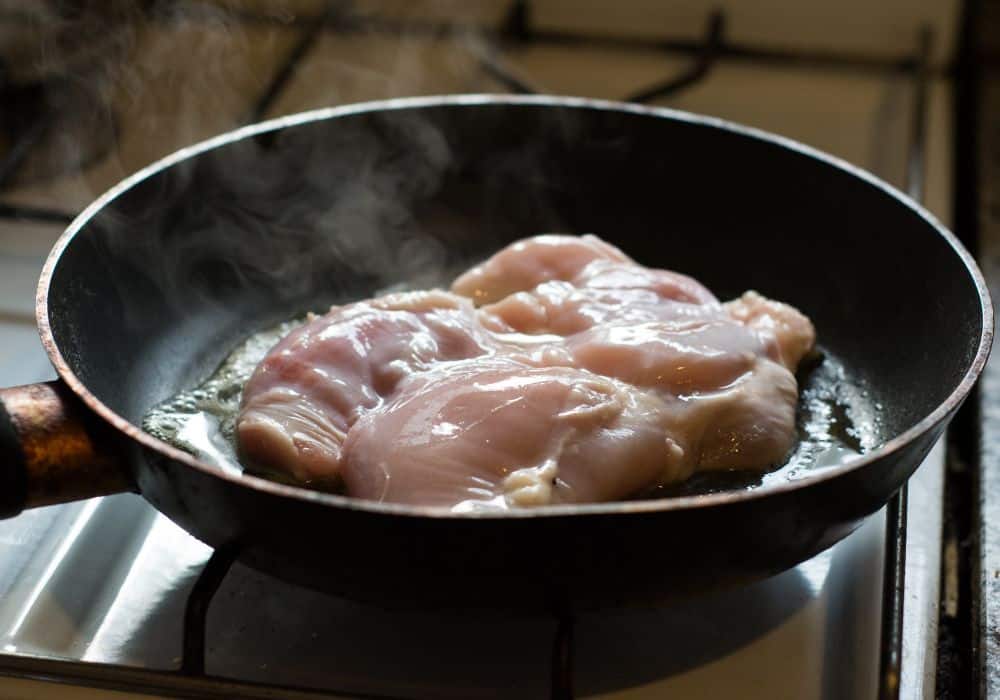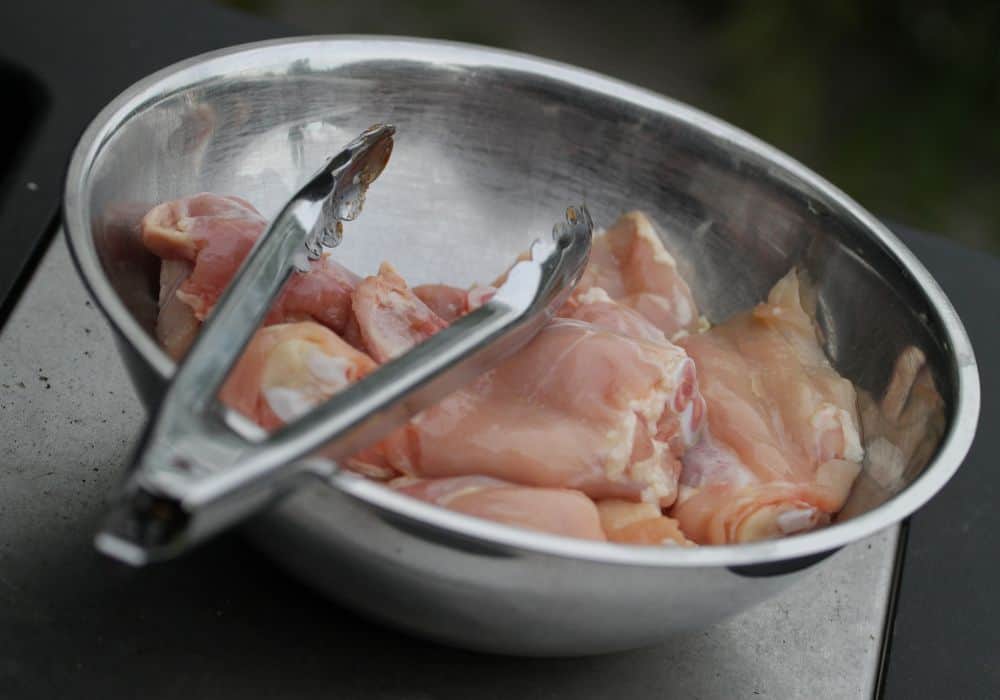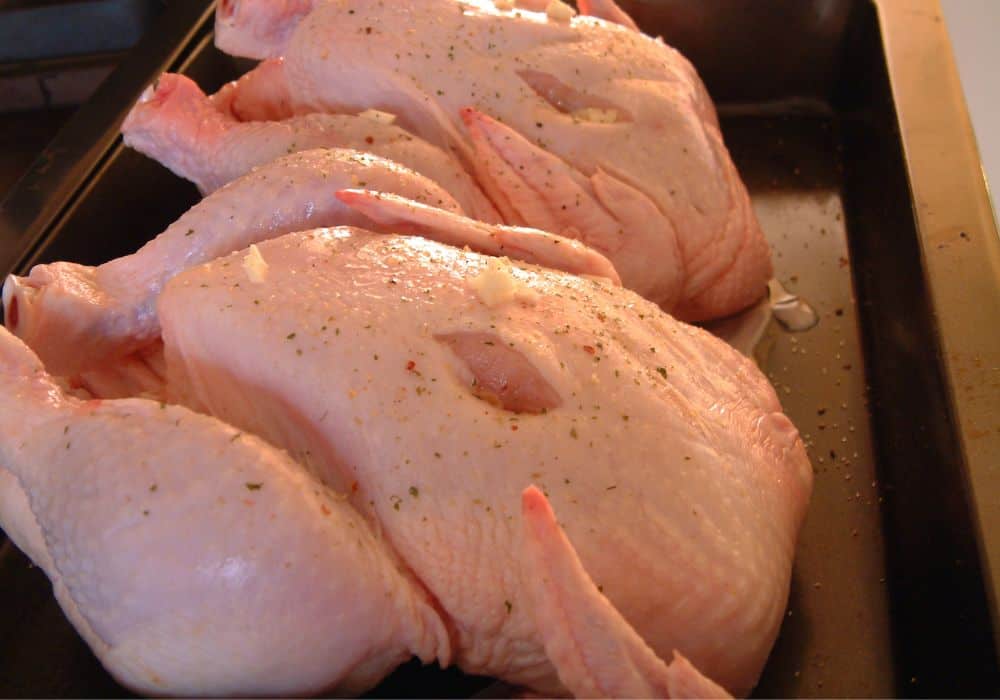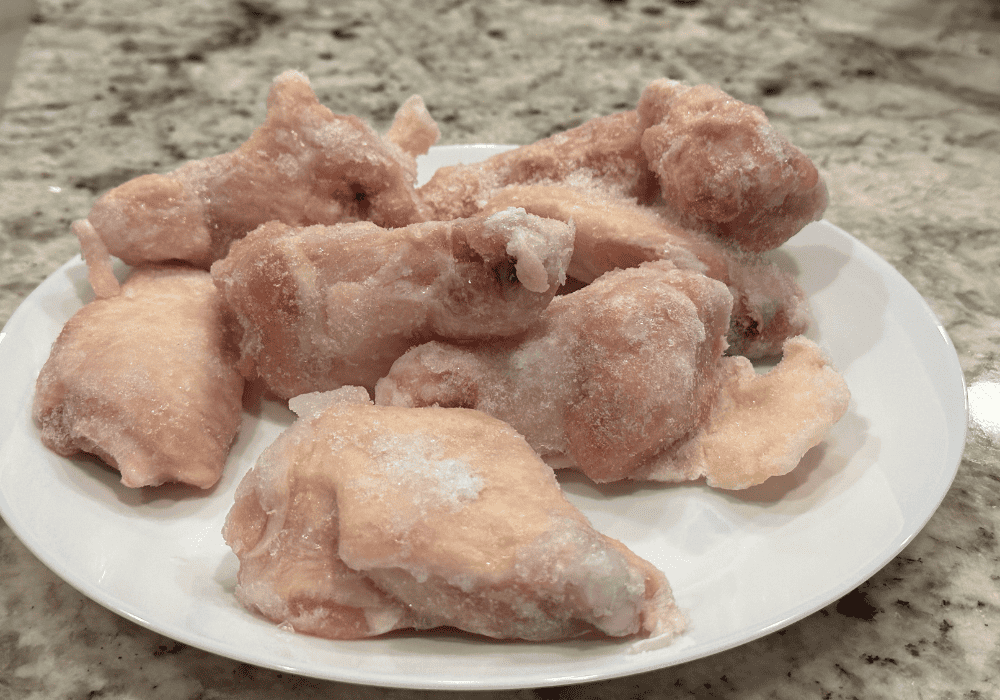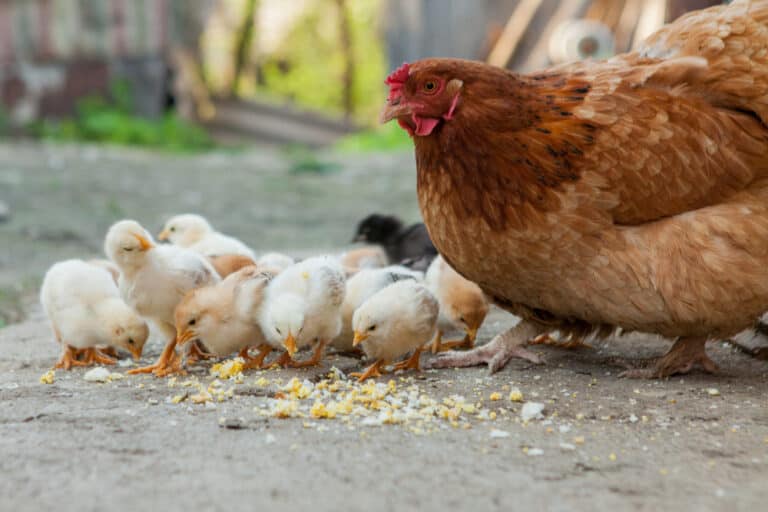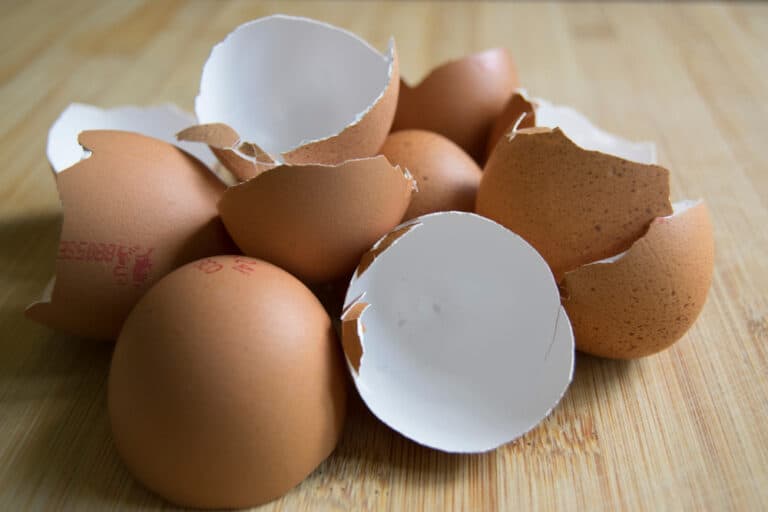One of the most consumed and popular meats in the world, next to pork, is chicken! We like to eat it in great quantities and also prepare it with delicious veggies and spices.
However, considering that eating undercooked or bad chicken can cause major health complications, people ask: “How long can raw chicken sit out?”
According to the USDA Food Safety and Inspection Service, the chicken should be left at room temperature for a maximum of two hours.
It often happens that we forget about it and just leave it for longer, but this can be very hazardous, and understanding the danger of undercooked or spoiled chicken is crucial!
At What Temperature Should I Store Chicken?
Consuming uncooked or spoiled chicken can lead to food poisoning, as it can contain harmful bacteria, such as Campylobacter and Salmonella. Therefore, the way you handle and store the chicken is very important!
So, let’s check what is the best temperature to store chicken! If you want to prolong your food’s shelf life, keep reading!
The best temperature for chicken is around 40°F. The biggest issue with raw meat, especially chicken, is that when you leave it at room temperature, it gets “attacked” by various bacteria.
When the temperature starts rising, it creates ideal conditions for bacteria to harbor.
These bacteria are the reason we get food poisoning or diarrhea. In addition, the climate where you live can play a vital role. The higher the temperature, the greater the chances for the raw chicken to contract bacteria.
Furthermore, the perfect environment for bacteria is moist, warm, and protein-rich (just like chicken).
Besides the temperatures, there are other factors that can affect how long it will take chicken meat to contract bacteria, such as humidity and airflow.
If you live in a hot/warm and humid area, do not leave the chicken for longer than an hour. The best place to safely thaw it is in the fridge. The ideal fridge temperature is between 37° F and 40° F.
How Long Can Cooked Chicken Sit Out?
Similarly to raw chicken, cooked chicken can sit out at room temperature for two hours and less than two hours if you live in a hotter climate.
Generally, chicken should be consumed during the first hour if you want to reduce the risk of foodborne illness. Most bacteria that cause various illnesses grow rapidly in the temperature range between 40°F and 135°F.
In order to minimize the chance of contracting bacteria, which can cause various health problems, learning how to prepare and handle is very crucial. Some common techniques include washing your hands with soap and using clean utensils.
Make sure that the working surfaces and cutting boards are also thoroughly cleaned!
Cross-contamination between raw and cooked foods can also be highly problematic because the juices from raw food will transfer to cooked food and contaminate it with harmful bacteria.
However, that is not the only cross-contamination you should worry about. The transfer of bacteria can happen from equipment to food and even people to food.
Interestingly, some people think cooked food can sit out longer because it is not raw. However, bacteria like food and surfaces that are moist, high in protein, and low in acid, and chicken is the perfect playground for them.
Therefore, stick to the two-hour rule and follow the food safety guidelines!
Is My Chicken Spoiled: How to Tell?
Let’s assume that you forgot about the two-hour rule, and your chicken sat out for a prolonged period of time. The first thing we do when this happens is return it to the fridge. But will that kill the bacteria? The answer is no! It will only slow down their growth or reproduction. So, here are the common signs of meat spoilage!
1. Texture
One can tell the chicken is bad if there is a difference in chicken texture. The normal chicken texture is glossy, slippery, and firm to the touch.
Chicken with a slimy texture and very soft to the touch is most likely contaminated and spoiled. Therefore, you should discard it immediately.
2. Foul Smell
The easiest way to determine whether a food is spoiled or stale is to do a smell test. If you notice some unusual odors, that chicken is spoiled and unsuitable for consumption.
Raw and fresh chicken does not smell, so it is easy to notice if something is out of the ordinary. A spoiled chicken can give off a pungent smell resembling rotten eggs or something sour or sulfur-like.
3. Discoloration
You have probably eaten chicken hundred times, so you know the usual color of raw chicken, ranging from bluish-white to pink and yellow. The color of the meat is affected by several factors, including the breed of chicken and the diet, age, and exercise.
You can tell that chicken is bad if it turns gray or green. If your chicken is any color other than usual, discard it.
In addition, if you see any mold growth, or generally if you see something is off, whether smell or color, do not eat that chicken. Sometimes chicken can have a normal texture but emanate an awful smell.
What Happens If I Eat Spoiled Chicken?
Eating bad chicken will most likely lead to health complications and, in rare cases, even death. According to CDC, around 1 in every 25 packages of chicken meat is contaminated with Salmonella.
The same goes for eggs, explaining why eating or drinking them is not recommended.
Unlike other meats that can be eaten rare or medium rare such as beef, chicken must be completely cooked to avoid contracting bacteria. So, what are the common symptoms of food poisoning?
The most common ‘culprit’ causing health issues is Salmonella, although there are other bacteria such as Campylobacter and Clostridium perfringens, These bacteria cause infections such as salmonellosis and campylobacter infection.
The clinical signs of food poisoning range from abdominal pain (cramps), diarrhea, nausea, vomiting, to even fever. The symptoms depend on the severity of the poisoning or the amount of food consumed, and they generally develop within 8 to 72 hours.
If you experience any of the mentioned symptoms, that is your clue to seek immediate medical assistance.
How to Safely Defrost Chicken?
Most people defrost their chicken by placing it on the kitchen counter and leaving it out until it is completely thawed. Adhering to CDC, leaving the chicken on the counter or submerging it in hot water can promote bacteria growth.
The safest way to thaw chicken is to take it out of the freezer, place it into the fridge, and leave it overnight. That way, the chicken will slowly defrost without allowing bacteria to swarm in and thrive. So, by dinner time, you will have perfectly thawed chicken.
However, most people tend to forget to take out the chicken and usually need it defrosted in a short period.
Therefore, they use unusual techniques, such as heating it with a fan or microwave to defrost the meat quickly.
But microwaves may heat the meat unevenly, and you can end up with meat that is soft on the outside and frozen on the inside. This is another favorable situation for the development of bacteria.
The common and fastest method is to place the frozen chicken (in freezer bags) inside the kitchen sink and submerge it in cold water. Defrosting the meat using this method may last between an hour and two hours, depending on the amount of meat.
Can I Refreeze the Chicken?
There are different opinions when refreezing thawed chicken; some suggest it is bad, while others suggest the opposite. So, what is the truth? Whether you can refreeze thawed chicken mainly depends on its state.
You can refreeze thawed chicken if it is thawed in the refrigerator and is not left at room temperature for longer than two hours.
However, if you take raw or cooked chicken, thaw it out for several hours, and refreeze it, that may cause some ill effects.
Remember, thawed chicken will taste differently compared to fresh chicken meat, and if you are someone that often eats chicken, you will definitely notice the difference.
Should I Wash the Chicken Before Cooking?
This is a very common question that arises due to different theories and misinformation circling online. As a food enthusiast, I often prepare chicken, and I have never seen anyone wash raw chicken meat before cooking it, and for a reason!
Some people believe washing it will kill the bacteria, but it worsens the situation. The best way to eradicate the bacteria is by cooking the meat rather than washing or ‘disinfecting.’
Conclusion
The most important takeaway from this article is that chicken can sit out for a maximum of two hours.
In this article, we have covered at what temperature you should store chicken, how to tell if the chicken is spoiled, what happens when you consume spoiled chicken, how to refreeze thawed chicken, and how to thaw it the right way!
What is your best method of defrosting thawed chicken? Please share your experience with us, and do not hesitate to reach out if you have any questions or comments!

